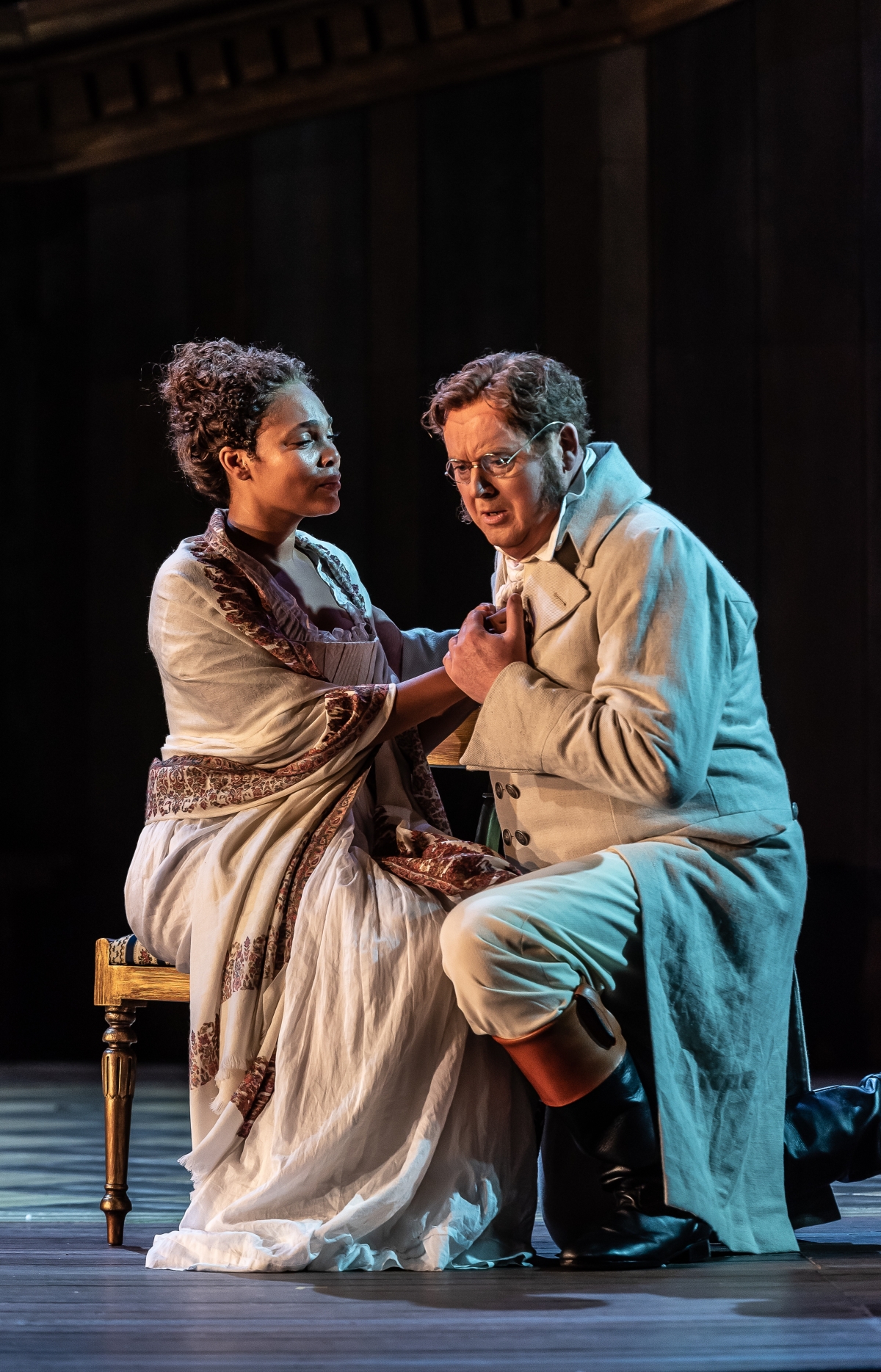
Welsh National Opera chose to open its Autumn season with what many may deem an odd choice: Sergei Prokofiev’s adaptation of War and Peace. In many ways a late opera, if not a post-opera, this monumental work was written in the last of the golden years of opera, and subverts many of the rules of this art form. Its inevitable choral nature, its equally inevitable lengthiness, and the huge number of roles it includes, make it a difficult text to tackle, and WNO’s production did not shy away from the challenge. The result was imposing, somewhat too ponderous in some moments, very effective in others.
The production manifested its desire to reconnect with the great work of Tolstoy to a degree perhaps greater than Prokofiev’s adaptation originally did, even from the very prologue, which showed a silent impersonation of the writer, almost monk-like in his white clothes and long beard, sitting at his table and penning down his story as the whole crowd of his characters gradually invaded the stage. It was a needed reminder, because Prokofiev’s work, especially in its second half – the one devoted to war – switches the focus from the protagonists to the Russian people and their strife, with choral sections far outnumbering and outlasting individual arias, and an inevitable rhetoric ambience taking over. WNO addressed these latter sections with a staging that was in many ways reminiscent of Soviet propagandist materials, highlighting – quite correctly – the cultural continuum that makes them in many ways descendants of the writings of both Tolstoy and Prokofiev. These choral sections are perhaps the most powerful and most successful in the entire production: partly because this is where Prokofiev’s composing is the strongest, and partly because of the skill and intensity of the ensemble’s work.

Lauren Michelle and Jonathan McGovern

Mark LeBrocq

Simon Bailey and Borodino battle scene
As for the main interpreters, Lauren Michelle as Natasha was outstanding for the power and body of her voice, particularly effective in the more dramatic scenes, although she would perhaps have benefited from more nuance in the parts that could have been sung in a softer fashion. Mark LeBrocq’s Pierre was animated and in some moments slightly faint, in a way that however suited perfectly the character’s doubts and indecisions. Jonathan McGovern gave a solid, strong performance as Andrei Bolkonski, only limited by the size of the part, barely long enough to showcase his ability – his performance in the scene of Bolkonski’s deathbed was particularly intense and convincing. Worthy of mention is also Adrian Dwyer (taking on, as most of the cast was bound to do, multiple roles) particularly in his performance as Anatole, which was well-sung, witty and engaging, in many ways dominating the first half. In the second half, Simon Bailey stood out as General Kutuzov, easily shouldering the weight of the narration that made him in many ways the true centre of the action.
The stage setting devised by Robert Innes Hopkins chose to be minimal and strongly rely on video in the background, a choice that was at times jarring in the first half, when the video elements appeared sometimes out-of-place, but became powerful and perfectly integrated in the second half, where it provided a perfect complement to the action and served to intensify the monumentality of its scope. From the start of the war section to the ending, the stage setting became part of the action itself, and gave it an additional depth and body that underlined the ambition of Prokofiev’s work.
War and Peace has been described in the past as an opera that is by its own nature almost impossible to stage faithfully. Still somewhat abiding to the conventions of opera in its first half, it abandons them completely in the second half, becoming a triumphal monument to the will and resilience of the Russian people in a way that is both imposing and highly rhetorical. Rather than resist this, the WNO’s production chose to embrace it, and that was a clever choice. It preserved a high degree of faithfulness to its text while exploring in greater depth its background, meaning and implications. In this sense, even with its occasional slow moments, it can be considered a successful approach to what can certainly be perceived as a daunting task.